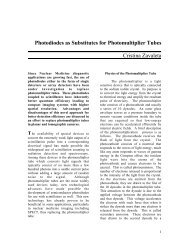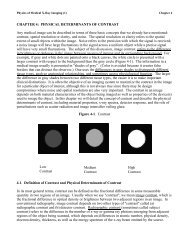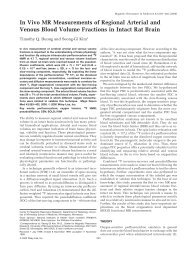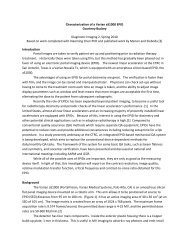MRI Artifacts: Mechanism and Control
MRI Artifacts: Mechanism and Control
MRI Artifacts: Mechanism and Control
You also want an ePaper? Increase the reach of your titles
YUMPU automatically turns print PDFs into web optimized ePapers that Google loves.
gradient echo sequences.<br />
Susceptibility artifacts can be made less prominent by performing imaging at low<br />
magnetic field strength, using smaller voxels, decreasing echo time, <strong>and</strong> increasing<br />
receiver b<strong>and</strong>width. Gradient-echo <strong>and</strong> echo-planar sequences should be avoided,<br />
because they accentuate susceptibility artifacts. The use of spin-echo <strong>and</strong> particularly<br />
fast spin-echo sequences should be considered.<br />
C. Chemical Shift <strong>Artifacts</strong><br />
Figure 3. An axial <strong>MRI</strong> of the head in a patient with mascara on her eyelids.<br />
Susceptibility artifacts from the mascara obscure the front half of the<br />
globes.<br />
A chemical shift artifact is caused by the difference in chemical shift (Larmor<br />
frequency) of fat <strong>and</strong> water. The artifact manifests itself as a misregistration between<br />
the fat <strong>and</strong> water pixels in an image ( Fig. 4). The effect being that fat <strong>and</strong> water spins<br />
in the same voxel are encoded as being located in different voxels. The magnitude of<br />
the effect is proportional on the magnitude of the Bo field <strong>and</strong> inversely proportional<br />
to the sampling rate in the frequency encoding direction. For a constant sampling rate,<br />
the larger Bo, the greater the effect. 5 Chemical shift artifacts are typically observed<br />
along the frequency-encoding direction but can also occur along the slice-selection<br />
direction of the image.<br />
Chemical shift artifact can be reduced by performing imaging at low magnetic field<br />
strength, by increasing receiver b<strong>and</strong>width, or by decreasing voxel size. The artifacts<br />
tend to be more prominent on T2-weighted than on T1-weighted images. Fat<br />
suppression methods often eliminate visible artifacts, <strong>and</strong> gradient reorientation can<br />
redirect chemical shift artifacts to another portion of the image.<br />
4


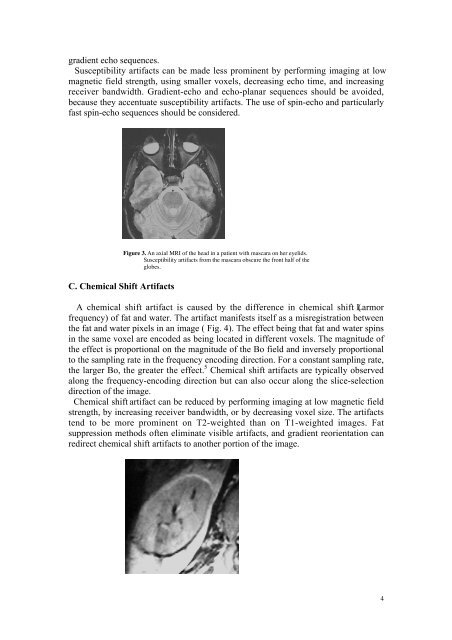
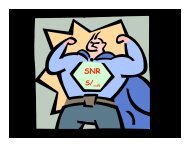



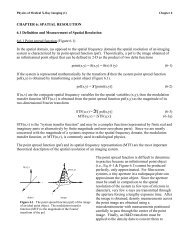
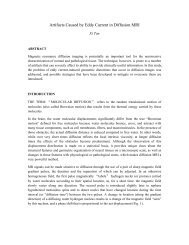
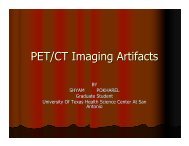
![Methods for preventing Motion Artifacts in MRI [pdf]](https://img.yumpu.com/28806288/1/190x146/methods-for-preventing-motion-artifacts-in-mri-pdf.jpg?quality=85)
